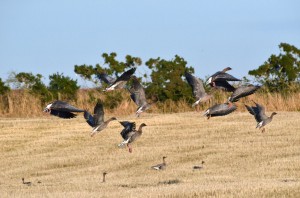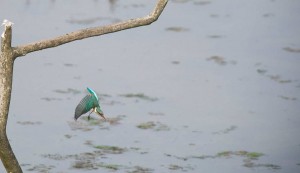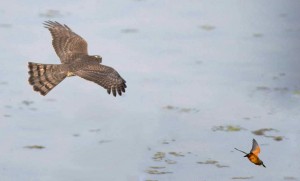Review of 2013 – Part 3
August
August is usually the last month that you can guarantee regular sightings of all of our common summer migrants, with Ospreys continuing to fish during low tide, Common Terns still using the raft as the last of their chicks fledge, Swallows still whizzing around the Visitor Centre windows and Sand Martins feeding their second brood at the wall. However, as explained in the review of July, this wasn’t to be the case in 2013! The Sand Martins had all vacated the wall by August, without a single sighting being made throughout the month. We can only presume that they decided to relocate to another breeding wall in the local area, as it would have been far too early for them to begin migrating south. Swallow sightings had also dwindled, however Ospreys and terns could still be seen aplenty.
Here at the centre we were busy honing our camera skills and went a bit overboard with the amount of video footage we recorded! Below are some of the more interesting videos we got over the month. The Common Terns continued to be seen in high numbers both on the tern raft and more commonly on the mudflats at high tide. We managed to record some interesting footage of them taking part in breeding behaviour early in the month. As mentioned previously this was, however, very late to be taking part in breeding behaviour and unfortunately didn’t lead to any eggs being laid.
Osprey sightings also occurred regularly throughout the month and below is a great video that we managed to get of one individual perching on the tern raft.
August also saw the return of kingfisher, after an absence of 4 months, with the footage taken below.
Other good sightings throughout the month included a Little Egret, initially spotted on the 8th and then seen over the next few weeks around the Lurgies area. Green and Wood Sandpipers were also seen later in the month at The Lurgies, along with regular sightings of Ruff, with 9 counted on the 17th. The end of the month also saw a group of 15 Common Scoter on the reserve, which was fairly unusual, as they are most at home offshore.
September
September is a month of change here on the reserve, with the last of our summer migrants heading back south and being replaced by birds that are also moving south to escape the harsh winters further north.
Our most famous winter visitors are, of course, the Pink Footed Geese, with peak numbers of around 65,000 visiting our reserve over the last few years. 2012’s peak of 63,844 was reached on the 21st of September, however, the geese were a bit slower in arriving in 2013. The first individuals were spotted on the 6th, when 46 were seen flying into the reserve, this number increasing to 18,000 by the end of the month. Although this number was much smaller than what we would usually be expecting by the end of September we still had faith that they would peak much higher, but just later than usual.
Our Pink Footed Geese were also joined by a smaller group of Pale-Bellied Bre

nt Geese throughout the month. There are two subspecies of Brent Geese, Pale and Dark Bellied, with the Pale being the less common and arriving from Greenland and the Dark-Bellied individuals arriving in much greater numbers from Siberia. Our group of 15 hung around until the 17th of September before moving further south, most likely to Ireland or Northumberland, where larger numbers overwinter.
A third species of goose present in high numbers over August and September, was the Canada Goose. Being an introduced species that has now settled permanently in the UK, they don’t have a natural migration path on this side of the Atlantic. This, however, hasn’t stopped them from taking part in a kind of ‘mock migration’ here in the UK. This involves large numbers of the population moving from England up to the Beauly Firth in late summer, before moving back south a few months later. With numbers increasing every year they are starting to be classed as a pest in certain places. The same trend is now being seen on the reserve, with 250 being counted at the beginning of September, with numbers probably set to increase again next year.
At the end of September one of our visitors was lucky enough to catch some amazing photos of an unexpected Sparrowhawk attack. As a Kingfisher dived into the water the Sparrowhawk emerged from the bushes and flew towards the Kingfisher as it resurfaced from the water before swooping down on it and going for the kill. Luckily, however, the Kingfisher saw the threat just in time and managed to zigzag across the pond, using its speed and agility to out-manoeuvre the Sparrowhawk. You can see a few of the shots from the chase below.


Craig Shepherd, Visitor Centre Assistant Manager.
Help protect Scotland’s wildlife
Our work to save Scotland’s wildlife is made possible thanks to the generosity of our members and supporters.
Join today from just £3 a month to help protect the species you love.
Preface
August August is usually the last month that you can guarantee regular sightings of all of our common summer migrants, with Ospreys continuing to fish during low tide, Common Terns …
